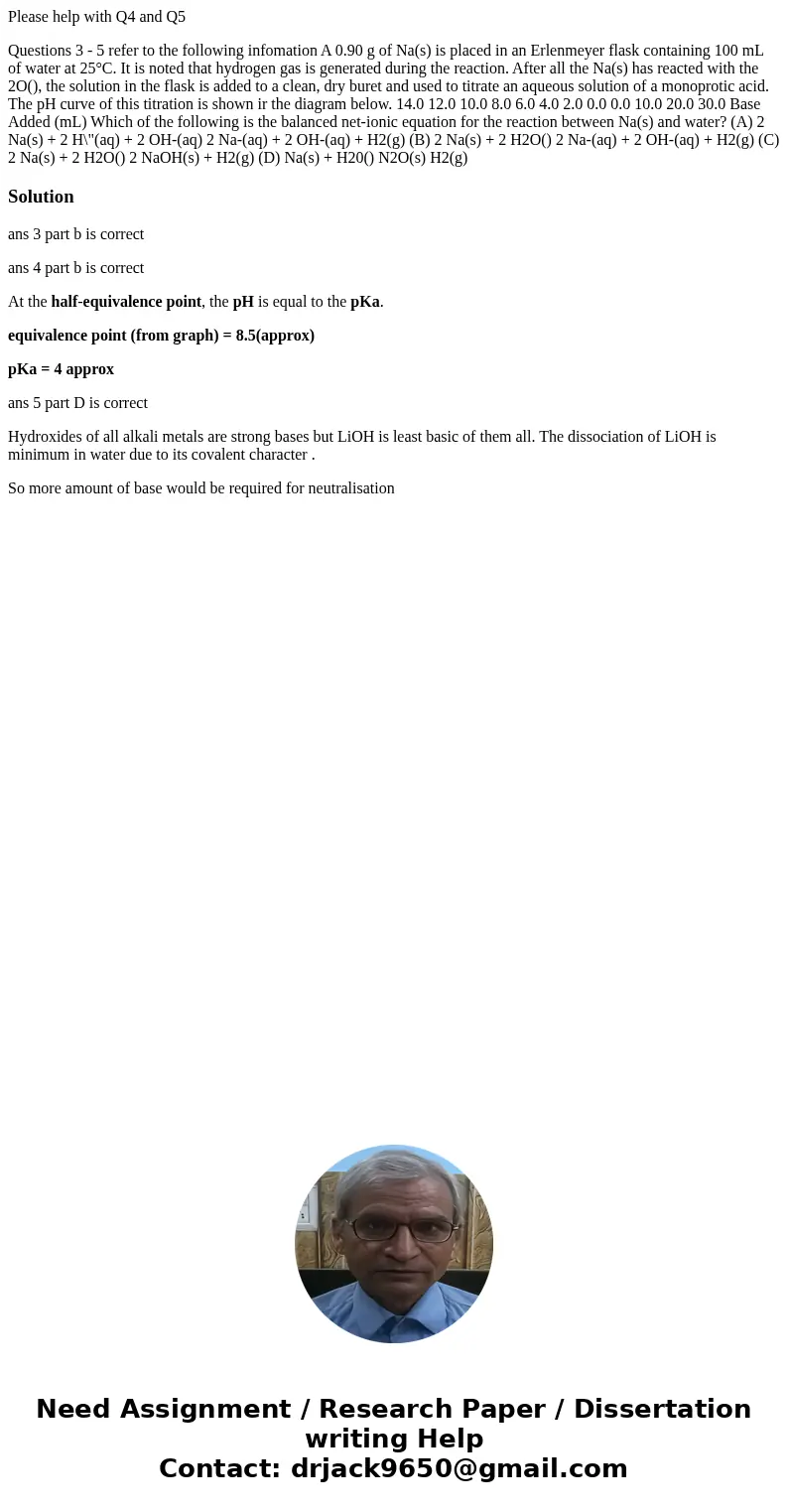Please help with Q4 and Q5 Questions 3 5 refer to the follo
Please help with Q4 and Q5
Questions 3 - 5 refer to the following infomation A 0.90 g of Na(s) is placed in an Erlenmeyer flask containing 100 mL of water at 25°C. It is noted that hydrogen gas is generated during the reaction. After all the Na(s) has reacted with the 2O(), the solution in the flask is added to a clean, dry buret and used to titrate an aqueous solution of a monoprotic acid. The pH curve of this titration is shown ir the diagram below. 14.0 12.0 10.0 8.0 6.0 4.0 2.0 0.0 0.0 10.0 20.0 30.0 Base Added (mL) Which of the following is the balanced net-ionic equation for the reaction between Na(s) and water? (A) 2 Na(s) + 2 H\"(aq) + 2 OH-(aq) 2 Na-(aq) + 2 OH-(aq) + H2(g) (B) 2 Na(s) + 2 H2O() 2 Na-(aq) + 2 OH-(aq) + H2(g) (C) 2 Na(s) + 2 H2O() 2 NaOH(s) + H2(g) (D) Na(s) + H20() N2O(s) H2(g)Solution
ans 3 part b is correct
ans 4 part b is correct
At the half-equivalence point, the pH is equal to the pKa.
equivalence point (from graph) = 8.5(approx)
pKa = 4 approx
ans 5 part D is correct
Hydroxides of all alkali metals are strong bases but LiOH is least basic of them all. The dissociation of LiOH is minimum in water due to its covalent character .
So more amount of base would be required for neutralisation

 Homework Sourse
Homework Sourse